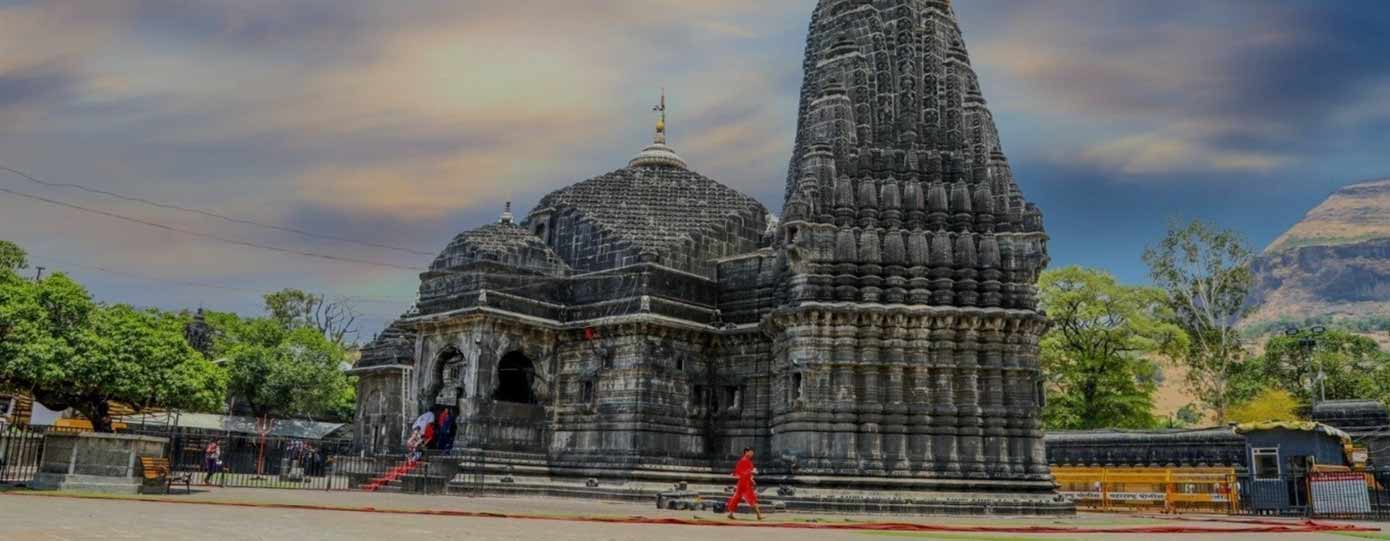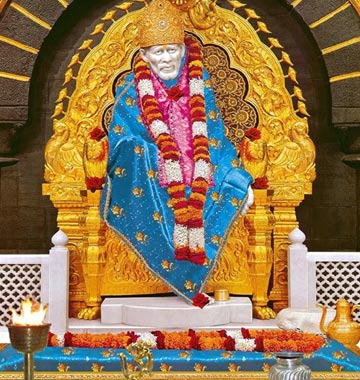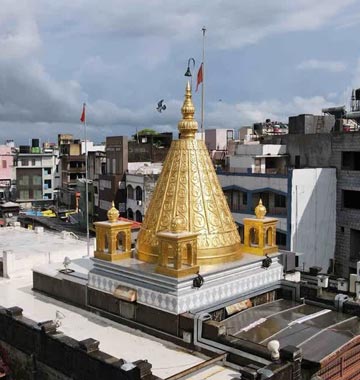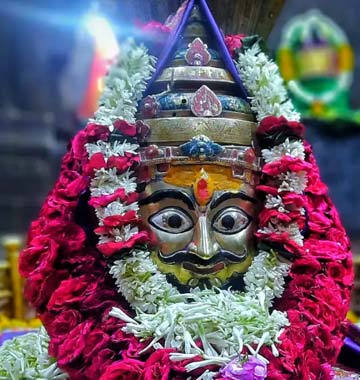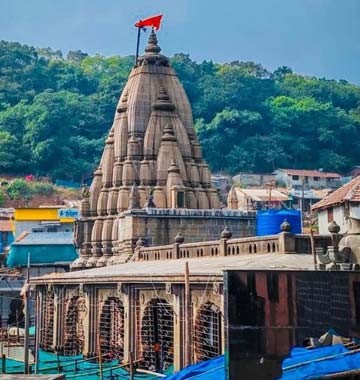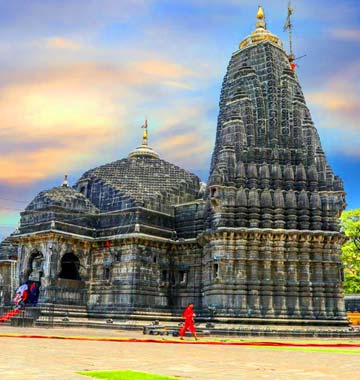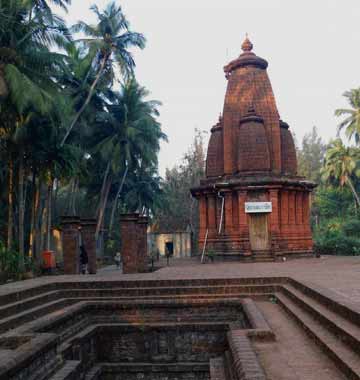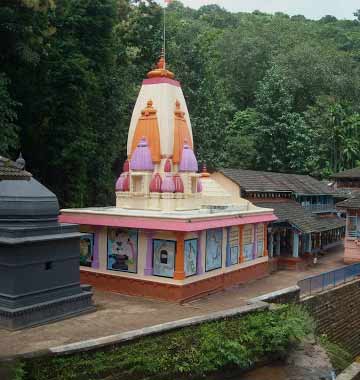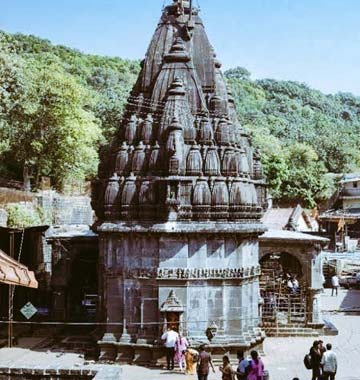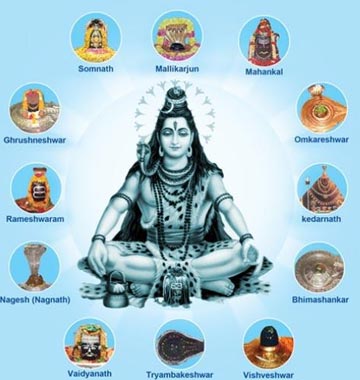Jyotirlinga Tour Packages
Shirdi with 3 Jyotirlinga Tour from Pune
03 Nights 04 Days
Pune - Shirdi - Grishneshwar - Trimbakeshwar - Nashik
Enquiry Now View Package DetailsShirdi with 3 Jyotirlinga Tour from Mumbai
03 Nights 04 Days
Mumbai - Shirdi - Grishneshwar - Trimbakeshwar - Mumbai
Enquiry Now View Package DetailsJyotirlinga Package from Pune 2 Days
01 Night 02 Days
Bhimashankar - Trimbakeshwar - Nashik - Grishneshwar - Pune
Enquiry Now View Package DetailsJyotirlinga Package from Mumbai 2 Days
01 Night 02 Days
Bhimashankar - Aurangabad - Grishneshwer - Trimbakeshwar
Enquiry Now View Package DetailsGujarat Jyotirlinga Tour Package
02 Nights 03 Days
Dwarka - Porbandar - Somnath - Diu
Enquiry Now View Package Details3 Jyotirlinga Tour Package
02 Nights 03 Days
Mumbai - Shirdi - Ahmedanagar
Enquiry Now View Package Details5 Jyotirlinga Tour Package
03 Nights 04 Days
Mumbai - Shirdi - Grieshneshwar - Parli - Ahmednagar - Bhimashankar
Enquiry Now View Package Details7 Jyotirlinga Tour Package
11 Nights 12 Days
Ujjain - Dwarka - Aurangabad - Nasik
Enquiry Now View Package Details9 Jyotirlinga Tour Package
10 Nights 11 Days
Ujjain - Dwarka - Aurangabad - Nasik
Enquiry Now View Package Details12 Jyotirlinga Tour Package
17 Nights 18 Days
Jamnagar - Dwarka - Somnath - Mumbai - Nasik - Shirdi - Aurangabad - Ujjain - Hyderabad - Mallikarjun - Rameshwaram - Haridwar - Guptakashi - Kedarnath - Varanasi - Patna - Deoghar
Enquiry Now View Package DetailsWe are
Travel Agency
As a travel agency, we provide various services and assistance to individuals and groups tour to Jyotirlinga looking to plan and book their travel arrangements contact us.
Everything’s on Schedule
Everything in the plan is on schedule for your trip.
24x7 Support
24x7 support providing quality services at anytime
Affordable Price
We offer affordable price for your Jyotirlinga Tour.
20+
Tours Packages
We have 20+ Jyotirlinga tour packages
30+
Destinations
30+ destinations to visit on Jyotirlinga trip
100+
Hotels
We have 100+ hotels for your Jyotirlinga trip
Jyotirlinga in Maharashtra
Welcome to Jyotirlinga Maharashtra, your one-stop shop for all things related to the Jyotirlingas in Maharashtra. Our commitment is to furnish enlightening, precise, and comprehensive information on the Jyotirlingas, assisting both pilgrims and pious individuals in comprehending, valuing, and visiting these hallowed locations. Our goal is to become the most trustworthy and knowledgeable travel agency for Jyotirlinga in Maharashtra.
Maharashtra is blessed with beautiful scenery, which enhances its appeal. Ancient temples dedicated to Lord Shiva, known as Jyotirlingas, offer a religious element. Maharashtra is home to five of the twelve jyotirlingas that have been unfurled across the nation's borders. You can visit 3 jyotirlingas in Maharashtra as part of the Jyotirlinga in Maharashtra tour package, which will give you an amazing experience of feeling one with the great almighty. From a good hotel room with all the amenities to prompt transportation service as well as any necessary Train / Aeroplane / Bus ticket sales, Jyotirlinga in Maharashtra will make every effort to make your holiday as comfortable as possible.
5 Jyotirlinga in Maharashtra
The religious element of revered temples devoted to Lord Shiva, known as Jyotirlingas, enhances the splendour of the scenically gifted state of Maharashtra. Out of the twelve Jyotirlingas that are spread throughout the country's borders, five are located in Maharashtra. To provide you an exquisite experience of feeling one with the great almighty, which you will treasure for a lifetime, Jyotirlinga in Maharashtra well-designed Jyotirlinga in Maharashtra includes all five jyotirlingas of Maharashtra.
3 Jyotirlinga in Maharashtra
Each of the Maharashtra's five Jyotirlingas—Bhimashankar, Trimbakeshwar, Grishneshwar, Aundha Nagnath, and Vaijanath—has an inspiring backstory that will enlighten you as you travel to these sacred sites through the beautiful forest and waterfalls. Jyotirlinga in Maharashtra will arrange everything for you to enjoy a nice trip, including a good hotel accommodation with all the modern conveniences, quick transportation, and any necessary train, plane, or bus ticket purchases.
You can visit Trimbakeshwar, Grishneshwar, and Bhimashankar, three Jyotirlingas in Maharashtra, as part of the 3 Jyotirlinga in Maharashtra vacation package. The 12th and last jyotirlinga is Grishneshwar/Grushneshwar. Trimbakeshwar is one of the 12 jyotirlingas (holy sites). Jyotirlinga Bhimashankar is close to Pune.
12 Jyotirlinga in Maharashtra
Maharashtra is a place of many different religious traditions. Every second, thousands of people worship one million different gods, and new religious holidays are celebrated every day.
Maharashtra is home to thousands of temples and pilgrimage sites. There are 12 Jyotirlingas spread throughout India for Lord Shiva's worshippers.
These 12 Jyotirlingas are divided into five major clusters, all of which are in Maharashtra. These travellers are known as Jyotirlingas because it is believed that Lord Shiva revealed himself to his disciples in the shape of light.
About Maharashtra in Jyotirlinga Trip
Our trip at Jyotirlinga Maharashtra is intricately woven into the rich fabric of history, culture, and devotion that characterizes the Jyotirlingas in Maharashtra. We want to provide you with an immersive experience that goes beyond information by delving further into the myths, stories, and significance of these hallowed sanctuaries. This will enable you to build a deep connection with these heavenly incarnations of Lord Shiva.
Our mission is to help and accompany you on your journey, be you a devoted pilgrim, an inquisitive traveler, or someone seeking spiritual enlightenment. Through the Jyotirlingas in Maharashtra, you can encounter the heavenly presence of Lord Shiva. We at Jyotirlinga Maharashtra are dedicated to giving each and every one of our guests an enriching, educational, and inspirational experience. We want to be there for you every step of the way because we recognize the deep spiritual journey that a pilgrimage to the Jyotirlingas represents. As you visit the holy Jyotirlingas in Maharashtra, you can be confident that you have access to the greatest resources because to our commitment to authenticity, user involvement, and thorough coverage. We appreciate your visit to Jyotirlinga in Maharashtra. On this holy voyage, we aspire to be your reliable guide and traveling partner.
Our Mission
Our purpose at Jyotirlinga Maharashtra is to shed light on the cultural and spiritual significance of the Jyotirlingas, which are situated in the state of Maharashtra. These hallowed shrines are not only centers of prayer but also priceless artifacts from India's illustrious past. We try to provide comprehensive information so that every pilgrim or traveller can witness the heavenly ambiance and architectural magnificence of these temples.
Our Vision
Our goal is to build an all-encompassing digital platform that links everyone to the sacred spirit of Maharashtra's Jyotirlingas. Our goal is to promote a more profound comprehension and admiration of these sacred locations by means of thoroughly researched articles, captivating material, and easily navigable features. By doing this, we seek to support the cultural and spiritual legacy of Maharashtra and aid in its preservation.
The Spiritual Significance of Jyotirlingas
In Hinduism, the idea of Jyotirlingas has great spiritual significance. Every Jyotirlinga is revered as a sacred location where Lord Shiva manifested as a light column, signifying his infinite and formless essence. India is home to these twelve shrines, five of which are located in the blessed state of Maharashtra. These temples are centers for spiritual development, self-realization, and the search for inner serenity in addition to being places of worship.
Maharashtra, a state in western India, is renowned for its rich cultural heritage and spiritual significance. Among its numerous religious sites, the Jyotirlingas hold a special place in the hearts of devotees. Jyotirlingas are sacred shrines dedicated to Lord Shiva, one of the principal deities in Hinduism. There are 12 Jyotirlingas spread across India, and Maharashtra is privileged to host five of these revered shrines. These Jyotirlingas are not only places of worship but also epitomize the spiritual and cultural essence of the region.
The Jyotirlingas in Maharashtra are not just religious landmarks but are also embodiments of the state’s rich cultural and spiritual heritage. Each of these Jyotirlingas has its own unique history, architectural beauty, and mythological significance, making them essential destinations for devotees and tourists alike. A pilgrimage to these Jyotirlingas offers a profound spiritual experience, providing a deeper connection to Lord Shiva and the timeless traditions of Hinduism. Whether one seeks divine blessings or wishes to explore the historical and cultural facets of Maharashtra, the Jyotirlingas stand as timeless beacons of faith and devotion.
Detailed Exploration of Maharashtra's Jyotirlingas
1. Trimbakeshwar Jyotirlinga
Historical Importance: The Nashik district's Trimbakeshwar is well known for its spiritual and historical significance. The Puranas cite the temple as one of Lord Shiva's most hallowed abodes, which is where the temple got its start.
Temple Architecture: The exquisite carvings, magnificent spires, and sacred Kushavarta pond characterize the temple's architecture, which is a fusion of traditional Maratha and Mughal traditions.
Spiritual Practices: The Abhishekam, a ceremonial bathing of the Linga with holy water, milk, and other offerings, is one of the many rituals that devotees take part in.
2. Bhimashankar Jyotirlinga
Historical Importance: Mythology states that Lord Shiva defeated the monster Tripurasura at Bhimashankar, signifying the victory of good over evil.
Natural Beauty: Bhimashankar, which is tucked away in the Sahyadri highlands and is encircled by wildlife and thick woods, provides a calm and beautiful environment.
Pilgrimage Experience: The temple is a popular destination for pilgrims, drawing hundreds of followers who travel through beautiful scenery in search of benefits.
3. Grishneshwar Jyotirlinga
Cultural Significance: In addition to being a spiritual hub, Grishneshwar, which is close to the Ellora Caves, is a cultural icon that showcases the area's rich artistic and historical legacy.
Temple Architecture: The temple is a work of art in craftsmanship, its construction embellished with elaborate sculptures that represent episodes from Hindu mythology.
Devotional Activities: Worshippers partake in a variety of religious practices, including as mantra chanting, prayer, and temple celebrations.
4. Aundha Nagnath Jyotirlinga
Historical Importance: With roots in the Treta Yuga, Aundha Nagnath, situated in the Hingoli district, is regarded as the eighth Jyotirlinga.
Temple Architecture: The temple is a prime example of the Hemadpanthi style's architectural genius, which is distinguished by its intricate carvings and stone structure.
Religious Significance: The temple is the center of religious activity, where followers carry out rites and ask for blessings for wealth and health.
5. Parli Vaijnath Jyotirlinga
Historical Importance: The Beed district's Parli Vaijnath is home to a number of stories, one of which is that it is a place where one can recover and regenerate.
Healing Powers: The temple is well-known for its therapeutic qualities, drawing visitors looking for blessings for good health and relief from illnesses.
Cultural Hub: The temple serves as a hub for cultural events, hosting a number of festivals and celebrations all year long to honor the area's rich traditions.
Our Commitment to Preservation
At Jyotirlinga Maharashtra, we understand how crucial it is to protect these hallowed locations for upcoming generations. Our dedication lies in advocating for eco-friendly travel methods that honor the sacredness and natural equilibrium of these hallowed locations. Among our projects are:
Promoting Awareness: teaching tourists about the Jyotirlingas' cultural and environmental significance.
Sustainable Practices: promoting eco-friendly behaviors among tourists, like reducing trash, using less water, and honoring regional traditions.
Community Engagement: working together to promote cultural heritage and support preservation initiatives in the local community.
Enhancing Your Pilgrimage Experience
We are aware that a pilgrimage to Maharashtra's Jyotirlingas is a very private and spiritual experience. In order to improve your experience, we provide a number of tools and services:
Interactive Maps: comprehensive maps that show you the location of each Jyotirlinga and highlight significant sites and amenities.
Travel Tips: Useful travel planning tips, such as when to visit, what to pack, and what local customs to observe.
Accommodation Guides: Suggestions for handy lodging options that suit different budgets and tastes close to each Jyotirlinga.
Cultural Insights: blogs and articles that go into the customs, celebrations, and cultural legacy of the Jyotirlingas.
Celebrating Festivals and Events
Maharashtra's Jyotirlingas are not just places of prayer; they are also the epicenters of colorful celebrations and activities. Participating in these celebrations offers a chance to become more culturally immersed and to establish a closer relationship with the divine.
Maha Shivaratri: Maha Shivaratri is one of the most important festivals honoring Lord Shiva, and it is widely observed at all Jyotirlingas. Fasting, mantra chanting, and all-night vigils are practised by devotees.
Shravan Month: For Shiva followers, the months of July through August are regarded to be extremely auspicious. At the Jyotirlingas, special prayers, Abhishekams, and rituals are performed during this time.
Also explore our exclusive Georgia tour packages at unbeatable prices – from Tbilisi’s old charm to the snowy peaks of Gudauri, experience it all with ease.
Local Festivals: Every Jyotirlinga has its own distinct collection of regional celebrations and activities that honor the area's rich cultural legacy. Taking part in these festivals provides an opportunity to learn about the customs and traditions of the area.
The Role of Jyotirlingas in Personal Spirituality
For devotees, the Jyotirlingas are an integral part of their own spirituality. There are opportunities for reflection, meditation, and spiritual development when one visits these hallowed locations. The Jyotirlingas can improve your spiritual journey in the following ways:
Connection with the Divine: Since the Jyotirlingas are thought to be direct incarnations of Lord Shiva, they offer a strong sense of spiritual connection.
Spiritual Practices: At these sacred locations, participating in rituals, prayers, and meditation can enhance your spiritual practices and promote inner serenity.
Exploring the Surroundings
Apart from the Jyotirlingas' spiritual importance, the surrounding regions frequently have historical landmarks, scenic views, and engaging local cultures. Your pilgrimage experience can be improved by exploring these surroundings:
Nashik
Located next to Trimbakeshwar, Nashik is well-known for its historic temples, vineyards, and the well-known Kumbh Mela celebration.
Book Georgia Honeymoon Package with us at best price and discover Georgia.
Pune
A cultural centre with historical buildings, educational institutions, and a bustling street life, Pune is located close to Bhimashankar.
Aurangabad
The UNESCO World Heritage Sites of Ellora and Ajanta Caves are located in Aurangabad, which is close to Grishneshwar.
Hingoli
Aundha Nagnath is located in an area renowned for its historical significance and tranquil surroundings.
Parli
Known for its therapeutic springs and scenic surroundings, Parli Vaijnath is a tranquil town.
Are there any specific rituals or customs to follow when visiting a Jyotirlinga?
Yes, visiting a Jyotirlinga typically involves certain rituals and customs:
- Pilgrims often perform a ritual bath in nearby sacred rivers or tanks before entering the temple.
- Offering prayers, flowers, and Bilva leaves to the Shiva Linga is common.
- Chanting of Shiva mantras like "Om Namah Shivaya" is encouraged.
- Observing fasts or participating in temple-organized pujas and aartis can enhance the spiritual experience.
- It is also customary to follow temple guidelines regarding attire and behavior to maintain the sanctity of the place.
Our Services
We at Jyotirlinga Maharashtra provide a number of services to make your pilgrimage or visit to these revered locations unforgettable and satisfying:
Detailed Guides: thorough guides on all Jyotirlingas, including information on their historical significance, background, and travel advice.
Travel Information: A guide providing practical information about how to go to these temples, including suggestions for lodging, modes of transportation, and nearby activities.
Spiritual Insights: blogs and articles that explore the spiritual dimensions of the Jyotirlingas, improving your knowledge and relationship with these sacred locations.
Our Team
We are a group of enthusiastic people committed to spreading awareness of the Jyotirlingas in Maharashtra. We are tech enthusiasts, scholars, writers, and photographers who are all passionate about India's spiritual legacy. Our staff comprises individuals with distinct viewpoints and proficiencies, guaranteeing that our material is varied, precise, and captivating.
Why Choose Us?
Authentic Information: We take great care in researching and validating our content to make sure you get accurate and trustworthy information.
User-Friendly: We've made our website as user-friendly as possible, with features that make it easy to get the information you need.
Comprehensive Coverage: We address every facet of the Jyotirlingas, offering a comprehensive one-stop shop for all your need, from historical details to travel advice.
Community Focused: We encourage community involvement and shared learning by valuing the experiences and narratives of our users.
FAQ’s About Jyotirlinga in Maharashtra
Q1. What is a Jyotirlinga? in Maharashtra?
A Jyotirlinga is a holy shrine that honors Lord Shiva and symbolizes his boundless nature. In India, there are twelve Jyotirlingas; Maharashtra is home to five of them.
Q2. What is the number of Jyotirlingas in Maharashtra?
Of the twelve Jyotirlingas, five reside in Maharashtra: Trimbakeshwar, Bhimashankar, Grishneshwar, Aundha Nagnath, and Parli Vaijnath.
Q3. What is the significance of the Jyotirlingas in Maharashtra?
Maharashtra's Jyotirlingas are significant spiritual and cultural sites, each with its own significance, rich history, and distinctive architectural aspects.
Q4. How can I travel to Maharashtra to see the Jyotirlingas?
Every Jyotirlinga in Maharashtra has comprehensive travel information on our website, including choices for lodging and modes of transportation.
Q5. How do I prepare for my visit to a Jyotirlinga?
Finding information about the temple's background, importance, and opening times is advised. Observe regional traditions and dress modestly. Our guides provide in-depth knowledge to assist you in getting ready for your trip.
Q6. Are there any lodging options close to the Jyotirlingas?
yes, we offer suggestions for lodging close to each Jyotirlinga, ranging from low-cost choices to pricier hotels.
Q7. What other sites exist in the vicinity of the Jyotirlingas?
Numerous Jyotirlingas can be found close to other important natural and cultural landmarks. To improve your trip, our guides provide information about interesting neighbouring locations.
Q8. Do the Jyotirlingas in Maharashtra observe any unique rituals?
Yes, there are special rites and ceremonies associated with each Jyotirlinga. Chanting Shiva mantras, performing the Abhishekam (anointing the Linga with sacred elements), and taking part in temple-specific festivities are common customs. In order to obtain blessings, devotees can also offer different things, such as milk, flowers, and fruits, and conduct special poojas (prayer ceremonies).
Q9. When are the ideal seasons to visit Maharashtra's Jyotirlingas?
Although you can visit the Jyotirlingas at any time of year, sometimes are said to be more auspicious than others. Particularly noteworthy are the festivals of Maha Shivaratri (February–March) and Shravan (July–August). Furthermore, the milder months of October through March are perfect for travel, offering a pleasant environment for pilgrimages.
Q10. When visiting the Jyotirlingas, are there any neighboring sites that are worthwhile seeing?
Every Jyotirlinga is situated close to a number of historical and scenic sites. For instance, you may see the Godavari River and the vineyards of Nashik close to Trimbakeshwar. There are wildlife reserves and verdant forests all around Bhimashankar. Near Grishneshwar, the Ellora Caves are recognized as a UNESCO World Heritage site. Your pilgrimage experience can be enhanced by checking out these local attractions.
Q11. When visiting the Jyotirlingas, what should I wear?
A respectful and modest outfit is advised when visiting temples. It is appropriate for men and women to wear kurtas or dhotis and for ladies to wear sarees. Steer clear of exposing apparel, sleeveless shirts, and shorts. You might need to stand or walk for extended periods of time, so wearing comfortable shoes is also advised.
Q12. Are foreign visitors allowed to see the Maharashtra Jyotirlingas?
Yes, visits to the Jyotirlingas are welcome from tourists from other countries. All tourists, regardless of ethnicity or religious background, are welcome to visit the temples. To guarantee a courteous and enjoyable visit, foreign visitors should acquaint themselves with local customs and etiquette.
Q13. Are there any rules about taking pictures at the Jyotirlingas?
Each temple has its own rules about photography. Certain temples permit photography in designated areas, but others might not, particularly in the sanctum sanctorum (the innermost shrine). It's recommended to inquire about photographing restrictions with temple officials or notices posted there. Always show reverence for the location's holiness and refrain from disturbing others who are praying.
Q14. What lodging choices are there close to the Jyotirlingas?
There are a variety of lodging choices close to each Jyotirlinga, from low-cost lodges to high-end hotels and resorts. In addition, a lot of temples provide Dharamshalas, or pilgrim lodgings, which are reasonably priced and offer the very minimum amenities. Every Jyotirlinga has comprehensive information and lodging suggestions on our website.
Q15. Do any medical facilities exist in the vicinity of the Jyotirlingas?
Yes, the majority of Jyotirlinga locations have access to neighborhood clinics and hospitals as well as other basic medical facilities. It is advisable to have necessary medications and have a plan in place for receiving medical care if needed for those who are traveling with unique health concerns. Larger adjacent cities offer well-stocked hospitals for emergencies.
Q16. Are temple festivals and events open to the public?
Absolutely, guests are welcome to take part in festivals and events held at the temple. These celebrations showcase the locals' spiritual and cultural customs, providing a lively and immersive experience. A closer bond with the devotee community and spiritual practices can be achieved by taking part in these activities.
Q17. What role can I play in keeping the Jyotirlingas intact?
One can support the Jyotirlingas' preservation in a number of ways. You can encourage eco-friendly travel methods, donate to conservation efforts, and volunteer for temple events. Maintaining the sites' sacredness, according to local laws, and teaching others about the importance of these hallowed locations are all vital components of preservation efforts.
Q18. How many Jyotirlingas are there in Maharashtra and where are they located?
Maharashtra is home to five of the 12 Jyotirlingas in India. These are: Trimbakeshwar Jyotirlinga in Nashik, Bhimashankar Jyotirlinga in Pune district, Grishneshwar Jyotirlinga near Ellora Caves in Aurangabad district, Aundha Nagnath Jyotirlinga in Hingoli district, Parli Vaijnath Jyotirlinga in Beed district.
Q19. What do the jyotirlingas near Shirdi represent?
Trimbakeshwar Jyotirlinga and Grishneshwar Jyotirlinga are the Jyotirlingas that are close to Shirdi.
Q20. The Jyotirlingas close to Aurangabad are what?
Grishneshwar Jyotirlinga, which is around 30 km from Aurangabad, is a Jyotirlinga.
Q21. What do the Jyotirlingas near Pune look like?
Bhimashankar Jyotirlinga is a Jyotirlinga that is close to Pune (110 km away and 3 hours away).
Q22. What is the location of Trimbakeshwar Jyotirlinga?
Drop off at the Nashik train station, then take a bus or taxi to Trimbak.
Q23. What was the very first jyotirlinga ever constructed?
The oldest jyotirlinga ever constructed, according to conventional wisdom, is Somnath.
Q24. Which Jyotirlingas were renovated by Ahilyabai Holkar?
Ahilyabai Holkar completed the restoration of AundhaNagnath Temple.
Q25. Which five jyotirlingas do you find in Maharashtra?
The five jyotirlingas in Maharashtra are ParaliVajinath, AungaNagnath, Bhimashankar, Grishneshwar, and Trimabakeshwar.
Q26. Out of the 12 Jyotirlingas in India, which one is the smallest?
Out of India's 12 jyotirlingas, the Grishneshwar Temple is the smallest.
Q27. The 12 Jyotirlingas in India are located where?
India's 12 Jyotirlingas can be found in a variety of states, including Gujarat, Maharashtra, Jharkhand, Madhya Pradesh, Uttar Pradesh, Uttarakhand, Tamil Nadu, and Andhra Pradesh.

